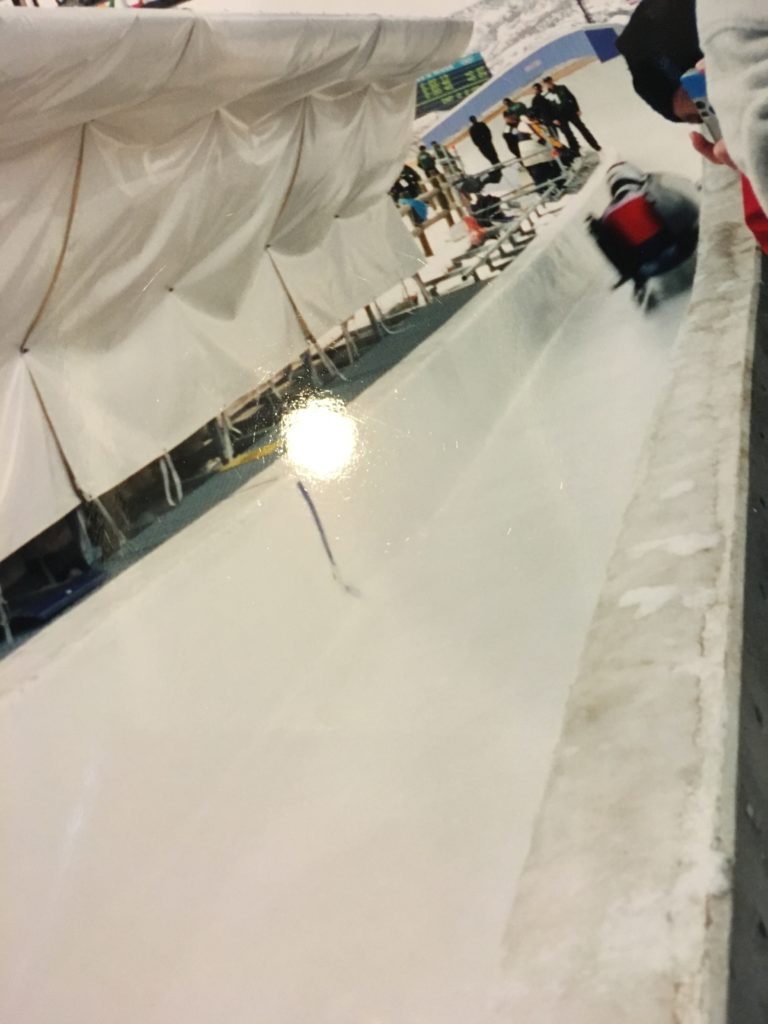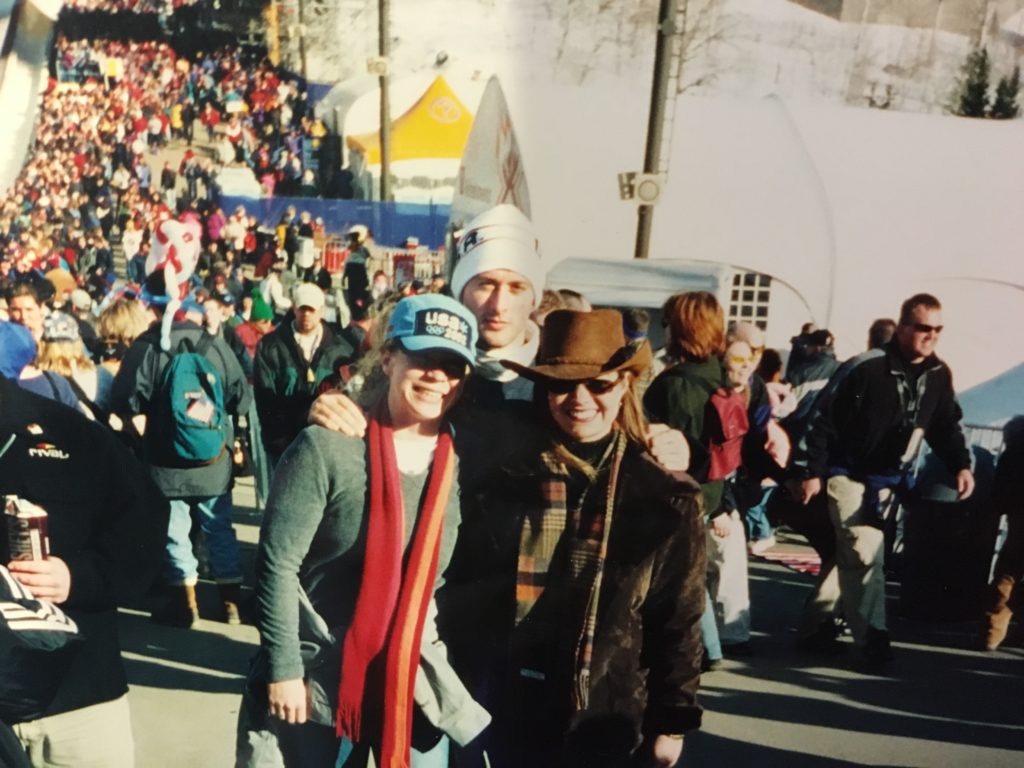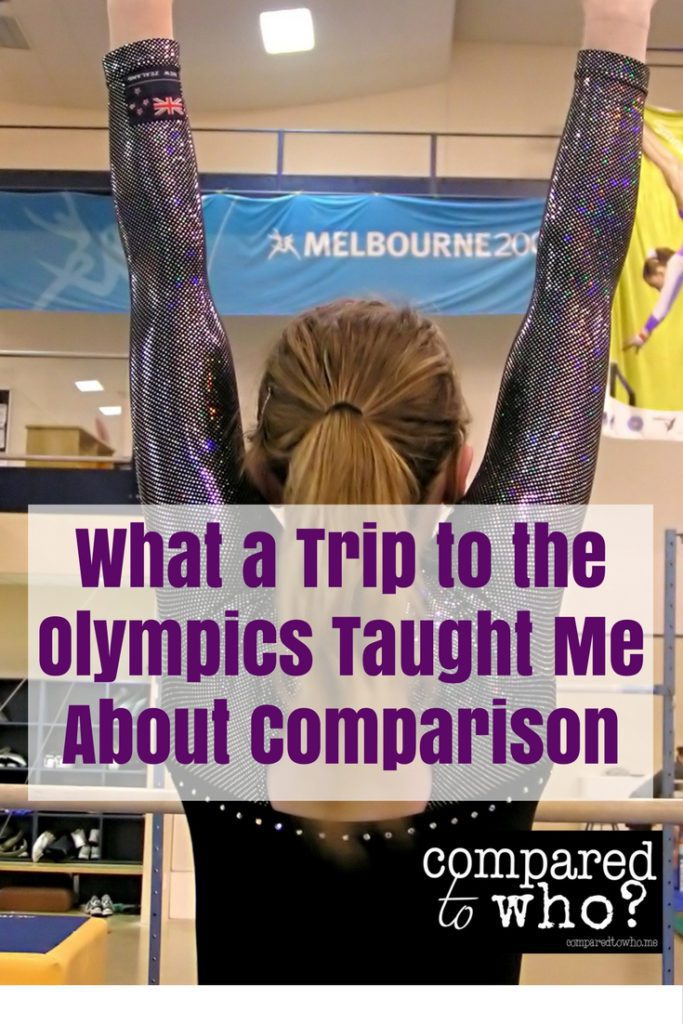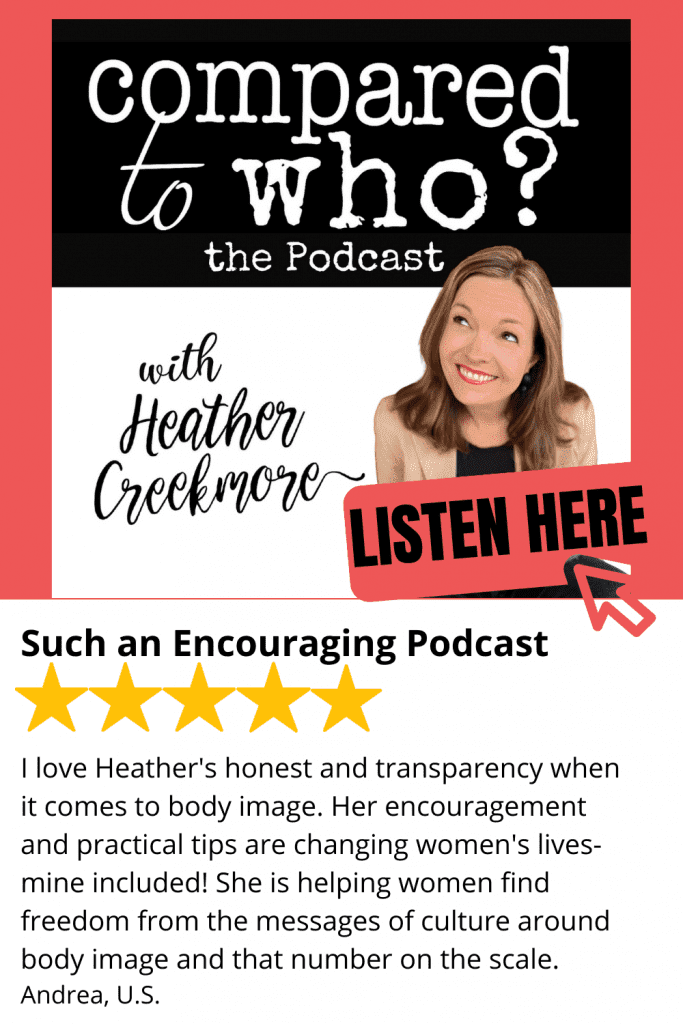Watching the Olympics this Winter? Here’s what a trip to the games taught me about comparison!
There’s a well-dressed woman who always slips into the sixth row at church. Obviously, she has it all together. Though she rushes in, she’s somehow, always, right on time. How does she gets her make-up and hair to look that good without a professional stylist at home? As the worship songs begin, you keep thinking about her.
Maybe she is a professional stylist, you muse. (Still staring.)
You’re not a creeper. You look away. While singing a few lines of the next song, your thoughts drift back to her. How can anyone look that good in a shirt dress? You admire how the garment drapes her small frame. Patting your stomach, you feel the war of flesh versus pants happening at your own waistline. I’d be so much more comfortable if I was that thin. {Sigh.}
Offering time. You take your seat. Pass the plate. Scan the bulletin. Back go your thoughts.
I bet my life would be better if I looked more like her. My husband would love me more. I wouldn’t have to be on this stupid diet. I could wear whatever I wanted. Even a shirt dress. . .
You’d never say this out loud–to anyone–but these thoughts continue to pound in your brain through the rest of the service.
Comparison. It even happens at church.
What a Trip to the Olympics Taught Me About Comparison
Comparison and I, we’ve had our struggles. I spent decades comparing myself to anyone and everyone (I was an equal opportunity comparer!). My feelings about myself moved up and down like an elevator, depending on how I felt I ranked against my competition.
But a few years ago God used a trip to the Olympics to teach me an important lesson on the topic of comparison and how to cure it.
In 2002, some friends and I decided we’d go to Salt Lake City. We had no reservations or agenda, we were just going to wing it and see what happened. The week before we left, we connected with a generous family that let all five of us crash at their home for a few nights. Once we arrived, we walked the streets of downtown Salt Lake trying to find tickets for any and every event that interested us.
Ultimately, we scored tickets to Olympic curling (riveting in person), a U.S. hockey game, bobsledding, and exhibition figure skating. Pre-marriage and children, this ranks as one of the best weeks of my life. The events were amazing to see live.
Well, all of them except one. . .
Bobsledding: Better on TV
(If you read my book, you may appreciate seeing the photos that go with this bobsled story from the comparison chapter!)
If I could go back and do it again, I’d likely skip the bobsledding event. I enjoyed watching bobsledding on TV (and that movie: Cool Runnings!), so I assumed it would be the same in person.
It wasn’t.
When you watch a bobsled competition live, you stand along the base of a track. You see the sled go by you in real time. This takes approximately one millisecond. (Imagine yourself standing at the base of a water slide– for hours–watching the tops of people’s heads as they fly by. Okay. Now you can begin to understand the thrill involved in spectating this event.)
Every six minutes another sled goes by. Unless there’s a delay. But you don’t know when there’s a delay. You don’t know when the next sled is coming. You don’t know anything because you don’t have a cozy chair and a television commentator to tell you what’s going on. The only information you have comes from the scoreboard at the top of the mountain. It doesn’t tell you much.
If you were at home you’d hear warm anchor banter about what an amazing journey this athlete had to the games. You’d see the video of the bobsledder’s childhood. You’d watch as the camera pans the competitor’s wife and mother, who wait nervously at the bottom of the track to see how their loved one will finish.
You miss all that back story when you catch a live bobsledding event. Instead, you see a flash of color and hear a rumble. This is followed by a brief “woosh” as you stare at the ten feet of track visible to you. It’s exciting for half of one second, every six to ten minutes.
Oh, and did I forget to mention that you are standing outside in the cold. You are on the top of a legit mountain–in the winter–standing still. I’ll confess I consumed way too many styrofoam cups of $4 hot chocolate.

Lessons from that Bobsled Track
While standing along that bobsled track I had no attachment or real interest in any of the athletes. I couldn’t see their expressions at the end–revealing either satisfaction or disappointment in their runs. I didn’t know anything about them personally and I missed the beauty of hearing their stories and seeing their faces. Instead, I only saw a flash of color, then a name and number on the scoreboard.
This is similar to what happens when we compare ourselves to other women.
Our thought process is detached from them as intricate human beings. We compare our (insert body part here) to her (insert body part here) and deliver a verdict. “Her’s is better than mine.”
With a “woosh” she goes by and we cast a one-dimensional view. We judge her on her appearance alone–knowing nothing but her numbers or maybe her name.
Juxtapose this to watching the bobsled competition at home, where you become invested in the stories of the athletes. You watch and cheer for the guys from the refugee team or for the woman who escaped abuse in her tiny African village to become an Olympian.
Viewing these lovely people one-dimensionally becomes impossible. You don’t size them up by their bodies because you’ve seen more of their personhood. As you hear their stories, your propensity to compare lessens. You no longer look at the female runner’s legs and feel jealous of their shape because now you know her story. (She ran five miles each day for a decade because the Olympics are the only chance she has to keep her family from extreme poverty. No one’s still covetous after hearing that.)
As you digest their stories, your heart opens.
The same holds true with that “perfect” woman at church. The woman you see at the gym. The hot woman you see in the commercials, or even the “has it all together” mom at your child’s school. . .
We can effectively fight the temptation to compare when we get to know each others’ story lines. When we understand that the other women we compare ourselves to are not one-dimensional beings, we are less likely to objectify them.
An Objective Look at Objectification
Yes. I said it. Objectify.
What’s the real problem when we look at another woman and compare ourselves to what we see of her?
It’s objectification.
Ladies, we give men a really hard time for doing this. Few things anger me more than the way women are physcially objectified, pretty much everywhere.
So shouldn’t we stop doing it too?
Physically sizing other women up neglects the truth that God made us all in His image. The glory of His image encompasses all women–from those whom the magazines deem “cover models” to the woman who’s convinced she never gets a second glance. We all reflect his image and glory.
Using any single metric–be it cooking skills, children’s behavior, marriage, or physical attributes–to assess other women shorts us all of the richness of our complexity as God’s finest creation. We are more than just our bodies, our gourmet ability, our house decorating abilities, or our parenting.
I certainly don’t want anyone to judge me on one of these areas alone. In turn, I need to be careful not to assess others in this one-dimensional way.
How to Find Her Storyline
So, practically, what do you do when you encounter that “better” woman?
She’s thinner. She’s obviously a better cook. She seems to possess this ability to do “it all” (Whatever that is?). It makes you crazy jealous. How do you stop comparing yourself to her?
You learn her storyline.
Become the soft-toned reporter who discovers the back story on her childhood, her training. Find out about her family. Her work. Her passions.
You discover her heart.
Nothing cures comparison faster than discovering the heart of the woman with whom I’m tempted to compare myself. Seeing her heart prevents me from objectifying her. Learning her story helps me to see how she’s real too. I hear her struggles and I know she doesn’t have a perfect life.
I flood with compassion for her, the deeper we engage in true, authentic friendship.
Yes, I know not every woman will show you her heart. Some, keep theirs very guarded and want you to only see the facade. Don’t be jealous of this, be saddened. Chances are great that they are miserably trapped in their own prison of image management. (P.S. No matter what she weighs or how great she dresses, this is not what freedom looks like.)
Same holds true if you spend a lot of time comparing yourself to celebrities or professional models. You can’t call Heidi Klum and ask to become BFF’s. But some of the same truth still applies–you can still search for a storyline. You can still try to see her as one of God’s complex creations.
What I find ironic is how quickly we compare our bodies to the bikini clad women on the magazine covers–yet, we rarely read (or take to heart) the headlines surrounding these photos. “How She’s Recovering” (after addiction). Or, “How She’s Doing it Alone” (after he cheated). We miss the reality that women with beautiful bodies and glamorous jobs still have real struggles.
Prayer Works, Too
If you can’t get close to that woman you always compare yourself to, you do have another option. That is: prayer.
I’ve found that the more I pray for someone whom I’m prone to envy, the softer my heart becomes towards them. If you can’t seem to find the chance to meet that “got it all together mom” who brushes by you in the school pick-up line, or if you know you’ll never meet your idol Taylor Swift, then simply pray. Say, “God, please show me how to see these women as real–body, soul, spirit, and mind–and not objects with whom I should compare myself.”
I know He’ll be faithful to help in this area.
What do you think? What helps you when you get caught up in comparing yourself to others?
[mc4wp_form id=”4141″]









0 Comments
Trackbacks/Pingbacks